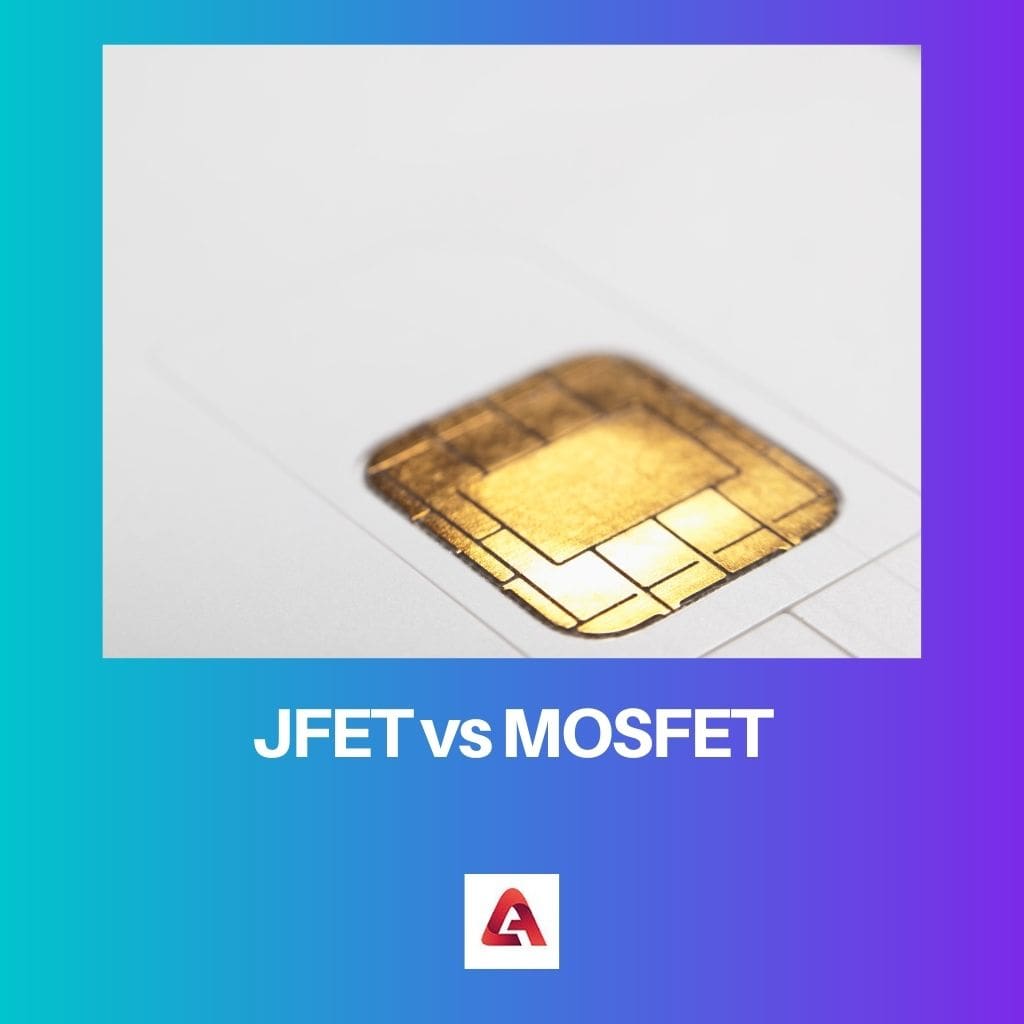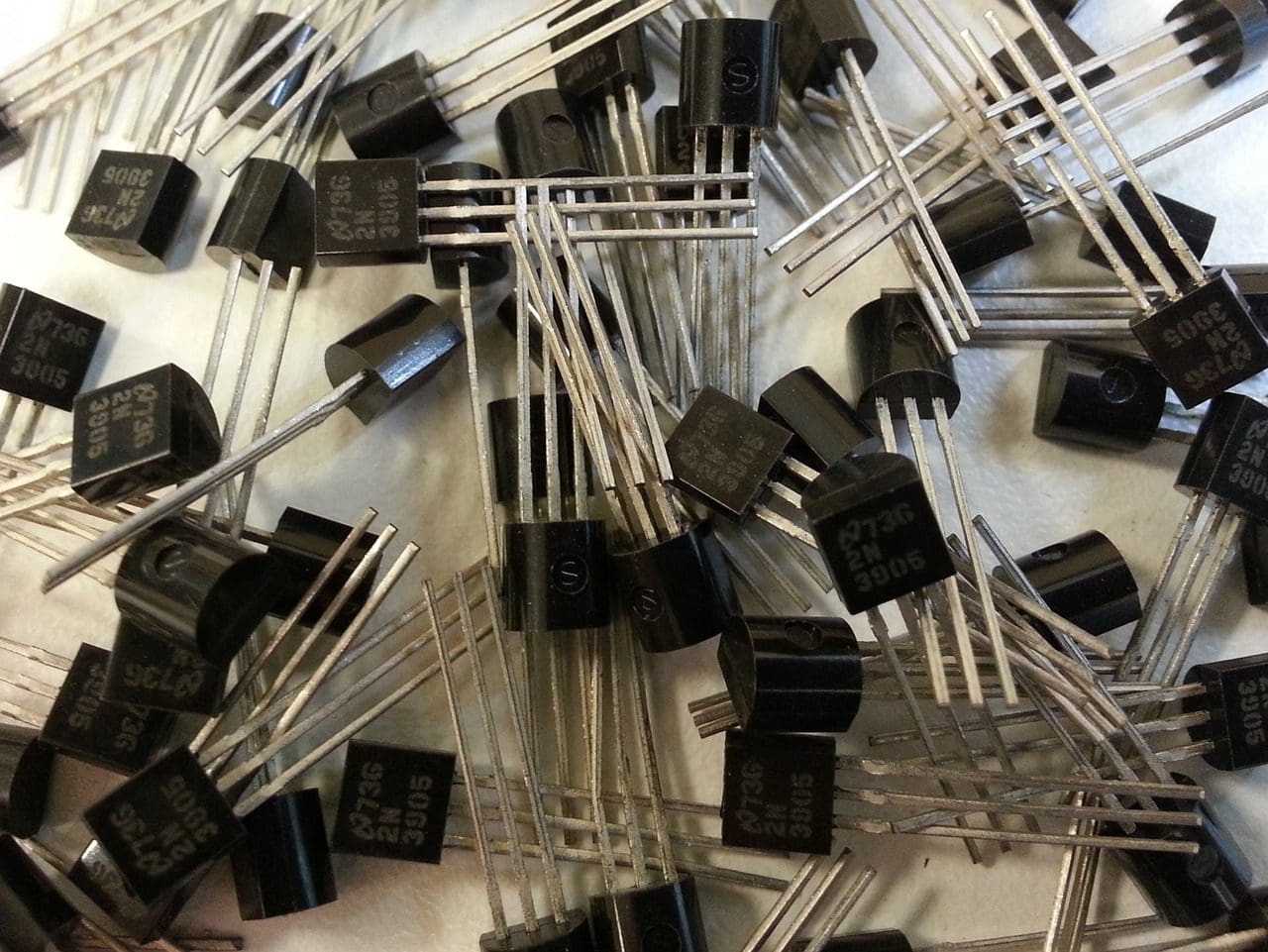JFET or Field effect transistors are electrical devices used as amplifiers or switches and have become an integral part of memory chips.
JFET and MOSFET are two kinds of FET that work on the principle of junction transistors but are pretty different.
Key Takeaways
- JFET (Junction Field Effect Transistor) is a field-effect transistor that uses a reverse-biased p-n junction to control the current flow between source and drain terminals.
- MOSFET (Metal-Oxide-Semiconductor Field Effect Transistor) is another field-effect transistor that uses an insulated gate to control the current flow, providing greater control and efficiency.
- Both JFET and MOSFET are field-effect transistors used in electronic devices, but JFETs utilize a p-n junction, while MOSFETs employ an insulated gate for better performance and control.
JFET vs MOSFET
JFET means Junction Gate Field Effect Transistor and is a unipolar device that consists of a source, a gate, and a drain, used in amplifiers, switches, and resistors. MOSFET means Metal Oxide Semiconductor Field Effect Transistor, which consists of four parts and is used in a computer memory chip.

The following key difference between the two is that JFET allows less input Impedance than MOSFET, and the latter, which has an insulator embedded, allows less current leakage.
JFET, termed an “ON device, ” is a depletion-type tool with low drain resistance. In contrast, its successor MOSFET is an “OFF device” that can work on both depletion and enhanced modes and has high drain resistance.
Comparison Table
| Parameter of Comparison | JFET | MOSFET |
|---|---|---|
| Input impedance | The low input impedance of about 108 Ω | The high input impedance of about 1010 to 1015 Ω |
| Drain resistance | Low drain resistance | High drain resistance |
| Easy of manufacture | It is more difficult to fabricate than MOSFET | It is comparatively easier to assemble than JFET |
| Price | Lower cost than MOSFET | Costlier than JFET |
| Functioning Mode | Depletion type | Both depletion and enhancement type |
What is JFET?
JFET, an abbreviation for Junction Gate Field Effect Transistor, is a unipolar device with three parts: a source, a drain, and a gate. It is mainly used in amplifiers, resistors, and switches.
It is a primary type of FET that works when a small voltage is applied to the gate terminal. This small voltage allows the current to flow from the source to the drain and beyond.
The voltage applied on the gate (VGS) controls the width of the depletion zone and, thus, the amount of current flowing through the semiconductor. Hence, the drain current flowing through the channel is proportional to the applied voltage.
As the negative voltage on the gate terminal increases, the depletion zone widens, and lesser current flows through the channel. Finally, a stage reaches where the depletion zone stops the current flow completely.
JFET is further classified into N-Channel JFET, where the channel that connects the drain and source is heavily doped with electrons, and P-Channel JFET, where the channel is rich in holes

What is MOSFET?
MOSFET, or Metal oxide semiconductor FET is an advanced FET configuration with four parts to carry out its functions. They are widely used in computer memory chips, such as in metal oxide semiconductor memory cells for storing bits.
Although MOSFET follows the basic principle of FET, it has a more complicated design, making it more efficient. MOSFET is also a unipolar device that amplifies signals in depletion and enhancement modes.
All types of MOSFET have a metal-oxide insulator that separates the substrate from the gate. When a voltage is applied to the gate terminal, a channel is formed between the drain and source that allows the current due to the electrostatic force.
The D-MOSFET works in depletion mode where there exists a pre-constructed channel, and this channel is closed on applying a voltage, whereas E-MOSFET that works in the enhancement mode requires a potential to create a channel for current flow.
MOSFET is a more advanced FET made to increase the drain resistance and apply infinite input impedance while lowering the leakage current.
However, MOSFET requires healthy maintenance because of the corrosion risk associated with the metal oxide insulator.

Main Differences Between JFET and MOSFET
- The critical difference between JFET and MOSFET is that current in JFET flows due to the electric field in the PN junction, and that in MOSFET is due to the transverse electric field in the metal oxide layer.
- The next crucial difference is that JFET has lower input impedance while MOSFET practically has infinite impedance since there is no direct contact between the gate and the substrate.
- Another notable difference is that JFET has lower drain resistance while MOSFET has a high drain resistance.
- JFET also has a higher leakage current, but MOSFET was curetted to be more efficient with a lower leakage current.
- Although JFET is more difficult to assemble than MOSFET, it is less costly.

The comparison table is particularly helpful in summarizing the key differences between JFET and MOSFET. It’s a valuable resource for students and professionals alike.
I completely agree with you, Theresa. The article simplifies complex concepts for easy understanding.
I found the comparison between JFET and MOSFET very informative, it helped me understand the key differences clearly.
I agree, the detailed explanation really made the comparison easy to understand.
The article is well-written and provides a comprehensive overview of JFET and MOSFET. I appreciate the clarity and depth of information.
Absolutely, the article is a great resource for anyone looking to understand these FETs.
I couldn’t agree more. The level of detail is impressive.
The comparison between JFET and MOSFET is well-supported by the detailed explanations of their construction and operation. It’s a valuable resource for anyone delving into these concepts.
I second that, Tanya. The article provides a comprehensive understanding of FETs.
I couldn’t agree more, Tanya. The article covers every aspect in such a way that makes it easy to understand for readers.
The article effectively explains the functioning modes and applications of JFET and MOSFET. It’s a rich resource for students and professionals in the field.
I found the section on the functioning modes particularly enlightening. The article does a great job of breaking down complex concepts.
Absolutely, Rachel. The article’s depth of detail is impressive and insightful.
The article provides a clear and in-depth comparison of JFET and MOSFET. It’s a great read for those seeking to expand their knowledge of electronic components.
I couldn’t agree more, Sabrina. The article really delves into the nuances of these transistors.
I appreciate the thorough analysis of the differences in input impedance and drain resistance between JFET and MOSFET. It’s a great read for those interested in electronics.
I completely agree. The detailed comparison provides valuable insights for electronics enthusiasts.
Couldn’t have said it better, Russell. The article really dives deep into the technical aspects of these transistors.
The detailed explanation of JFET and MOSFET, their key differences, and applications is enlightening. It’s a must-read for anyone interested in electronics.
I completely agree, Nrose. The article’s depth of information is truly impressive.
The article effectively breaks down the critical differences between JFET and MOSFET, making it accessible to readers with various levels of expertise in the field.
I found the breakdown of technical concepts particularly helpful. The article is a valuable educational tool.
I think the explanation of how JFET and MOSFET work in amplifying signals and controlling current flow is very clear and well-presented.
I couldn’t have said it better myself, Lucy. It’s an outstanding breakdown of the technical details.
I agree. The article provides a solid foundation for understanding the functionality of these transistors.